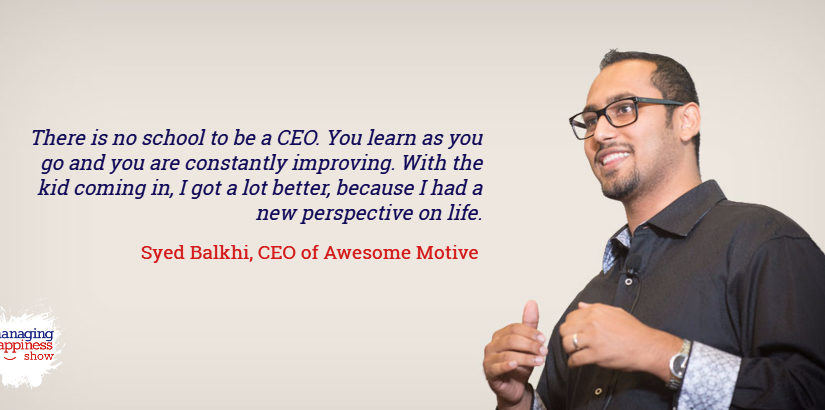I used to think that they are useless things that end up somewhere in a business plan or on a forgotten page on the website. But man was I wrong.
Do you know one of the most critical and influential aspects that determine your success?
Having the right Vision, Mission, and Core Values.
I have experienced the pain of not having them.
Most startup founders ignore these north star metrics because it can be really hard to get them right. I have helped several organizations with crafting their Vision Statement and spoken at conferences on the topic.
For a while, I have been obsessed with it 🙂
So in this post, I will show you how to craft a persuasive Vision Statement that propels your employee engagement. You will find a few Silicon Valley GIFs to guide you along the way.
Let’s go:
The difference between a Mission and a Vision Statement
What is a Vision Statement
A Vision Statement is the north star of an organization. It defines why your organization exists and where you are headed.
It aligns all the employees and gives a clear direction on why you do what you do every day. It helps you to make decisions in your day to day operation. Ideally, it inspires your employees and customers alike.
Here are 3 characteristics of the Vision Statement:
- It defines the optimal desired future state, the end result, of what an organization wants to achieve over time.
- It should be something really big that feels almost impossible to achieve but worth pursuing.
- It provides the guidance and inspiration to what an organization is focused on achieving in the years to come.
What is a Mission Statement
A Mission statement defines the present state or purpose of an organization and answers the following four questions:
- WHY do we do what we do
- WHAT does the organization do
- WHO the organization does it for
- HOW the organization does what it does
In this post, I will focus only on vision statements. I will write a follow-up post on Mission Statements soon.
Have you heard about “The Golden Circle”?
Simon Sinek is a prolific author and marketing consultant.
In a viral TED Talk (shared below), he introduced the concept of “The Golden Circle.” It shows how great leaders inspire action instead of manipulating people to act.
Here is an elaborate explanation on how it starts from the inside out.
WHAT: Every single company and organization on the planet know WHAT they do. This is true no matter how big or small they are and what industry it is.
Everyone is easily able to describe the products or services a company sells or the job function they have within the system. WHATs are easy to identify.
HOW: Some companies and people know HOW they do WHAT they do. Whether you call them a ‘’differentiating value proposition’’ or ‘’unique selling proposition,’’ HOWs are often given to explain how something is different or better.
Not as obvious as WHATs. Many think these are the differentiating or motivating factors in a decision. It would be false to assume that is all required. There is one missing detail.
WHY: Very few people or companies can articulate WHY they do WHAT they do. This isn’t about making money – that’s a result. WHY is all about your purpose, cause or belief.
WHY does your company exist? WHY do you get out of bed in the morning? And WHY should anyone care?
When most organizations or people think, act or communicate they do so from the outside in i.e. from WHAT to WHY. And for a good reason – they go from the tangible to the intangible.
We say WHAT we do, we sometimes say HOW we do it, but rarely say WHY we do WHAT we do.
But that’s not the case with the inspired leaders and companies. Every single one of them, regardless of their size or industry, thinks, acts and communicates from the inside out.
In his famous TED Talk that I shared above, Simon uses the example of Apple and the way they communicate. Everything starts with the WHY.
80+ Great Vision Statement Examples
3 compelling reasons why you need Vision and Mission Statements
1. Your Decision Filter
The main reason why you need a strong vision statement for your business is that you can use it as a filter. You run every big business decision through this filter and see if it fits. This could be a product decision, a marketing campaign, partnership, etc.
I was inspired by a presentation of Jack Ma, the founder of Alibaba.
Every day he gets tons of new ideas for his business. Every day his coworkers come to him and say, ‘Hey we could implement this into the business, and this would make us a ton of money.’ He would go crazy if he were to follow all his ideas and the ideas of his staff.
So he takes the idea and runs it through the vision filter.
In his case: “Does this make doing business easier?”
If yes, then he will consider the idea. If not, then he will flat out reject it.
This is how you build a company with a strong positioning and a strong product.
Another great example is CVS. They stopped selling cigarettes in their stores since it is not in line with their mission statement: “We will help people live longer, healthier, happier lives.”
2. Your inspiration
Your Vision Statement is the reason why you get out of bed in the morning. It should be something you are passionate about. It should be inspiring to your employees as well so that they see the purpose of what they are doing.
“If you hire people just because they can do a job, they’ll work for your money. But if you hire people who believe what you believe, they’ll work for you with blood and sweat and tears.” – Simon Sinek
3. Your positioning in the marketplace
If your CEO and your marketing team do their job right, they will ensure that your website, blog, and presentations are in support and revolve around your vision statement.
Lance Crosby once told me that a CEO has only three jobs. I will share two of them in another article. The one that’s relevant to our discussion is: to communicate the company’s vision to the outside world and the staff, over and over. Like a parrot.
How to come up with your vision and mission statements: 4 simple steps
Unfortunately, it is rare that the vision and mission are already set during the founding process of the company. It usually happens in the growth phase. Here are 3 steps you need to follow for coming up with the vision statement.
Step #1: Assemble your team
You know what has worked best for me?
Gathering a small group of people (maximum 6) that meet once per week, at a fixed time, for 2 hours.
Wondering how to choose your group?
Obviously, the leader of the organization needs to part-take. The rest of the group should consist of representatives of the different departments.
It is important to include the staff in this decision so that everybody has bought into the Vision and Mission; even if it’s the leader who is heavily shaping it.
Pro Tip: Have a copywriter on standby. He does not have to be part of the process but send him the notes of the meetings and ask him to wordsmith it into good sounding sentences. This will save you a lot of time.
Step #2: Get into the right mindset
It is beneficial if the members of the committee understand the benefits of a company that is based on its Vision, Mission, and Values. I always start with watching Start with Why which brings everybody in the team on the same page.
Also, think BIG! The sky’s the limit. Shoot for the stars, and in the worst case, you will hit the moon.
Step #3: Write the Cover Story
Build small groups of two or three. Assume the world in 5 or 10 years from now. Our company is the cover story of an international magazine. Let the group pick the name of the magazine and ask them to write up the perfect cover story.
These stories will give you amazing material for your Vision Statement.
Step #4: Why does your business exist?
Define the problem your company solves in the world. No, you can’t think like Gavin Belson.
The main reason can also not be ‘we are here to become filthy rich.’
Because making money is a side effect of adding value to people’s lives.
If you can provide crazy value to a huge amount of people, you are pretty much guaranteed to be the most valued company around. If you think about it, that’s what the world’s largest five companies are doing right now.
Writing your Vision Statement
Visualize a crystal clear version of the kind of business you want to build. Have your team brainstorm around the above-mentioned reasons, and come up with things that sound good!
A few common Vision Statement Types are:
Quantitative Vision Statements: This could be a revenue number, market share or number of people you want to reach.
Example: Twitter: “To give everyone the power to create and share ideas and information instantly, without barriers.”
Competitive Vision Statements: I’m personally not a fan of these. The only time I would recommend to go for a competitive one is if you, as an underdog, have the goal to destroy the market leader.
Example: Honda (in 1970): “We will destroy Yamaha.”
Superlative Vision Statements: You becoming the #1, the best, etc.
Walmart: “To be the best retailer in the hearts and minds of consumers and employees.”
Here are 5 tips to get it right.
- It should be emotional and filled with passion.
- Use clear and concise language.
- Write it in the future tense.
- Has to be big!
- Include the impact you want to have in the world.
Get feedback
Once you have a few drafts, share them with your entire company via SurveyMonkey or Google Forms to vote on them and to give feedback.
The idea behind this is that your Vision, Mission, and Values committee comprises of just representatives of the entire organization.
We want everybody in the company to participate. This will result in a much better buy in since everybody feels that they came up with it and it is not something that was forced down their throat from the top.
Pick the winner
Once your group has analyzed the feedback you pick a winner and present it to your organization in a town hall style meeting.
But it does NOT end here.
It is still a long way to go. I will cover how to implement the mission and vision into your business in another post.
Want to take this to another level? Draft Your Personal Mission Statement
After reading this post, you understand how important it is for your business to have a strong vision statement and how you can effectively use it.
If your business Vision is aligned with your personal mission, it will be a lot easier to go through the rough patches of running a business.
Did you ever think about what YOU want to accomplish while you are on this planet?
Most of us follow the standard American Dream. We feel amassing a certain dollar amount will suddenly make us feel happy and accomplished.
Most of us climb the ladder of success in a frantic manner without checking which wall this ladder is leaned against.
I used to do the same thing. Until…
I had a very big and uncomfortable wake-up moment when my amazing wife, Yurda, was diagnosed with breast cancer a few years ago.
(Knock on wood, she is doing great. We just had a follow-up, and everything is looking great.)
When we got this news, I envisioned myself laying on my deathbed, looking back at my life and thinking if I did what I was supposed to do? If I made the impact I wanted to have in the world?
I thought long and hard about this and came up with my personal mission statement:
“To be a change agent who is transforming individuals and organizations so they can reach their full potential and consciously live the life they desire.”
After I had drafted the above statement, I had a clearer thought process. Mr. Obama does a good job at describing how I felt.
I loved MaxCDN. It was a ton of fun building the business and the team were out of this world amazing.
But my personal mission statement made the decision of selling MaxCDN easy.
To all the awesome guys back at MaxCDN – I miss working with every single one of you.
I feel we had a big impact on the lives of our employees, but I always dreamed of having a bigger impact on the world.
On that note, I would like to introduce you to my current project.
DRUMROLLS PLEASE…
Managing Happiness
Managing Happiness is my latest project, and it is very much in line with my personal mission statement.
Founding and growing a startup from scratch is a lot of work. It was a huge challenge for me to manage my family life alongside it.
Until one day, when I had an epiphany, and we started applying business principles to our family life. We developed a framework on how to manage our family, and this took away 80% of all the friction we had in our relationship.
Curious to learn more about Managing Happiness? Check out the video of the funny story that started all this.
I hope you have a great time crafting your Vision Statement. Please do me a favor and post your Vision Statement in the comment section!!




2 comments On How To Catapult Your Startup’s Success With Your Vision Statement?
I must confess Mr Henzel , your article on vision statement has been truly an eye opener.It has assisted me in having clarity of focus on ideas and how to establish my goals and improve myself on building WHAT I want, HOW to go about it and the fundamental core of WHY …. Thank you Sir
You are very welcome Yussuf! I’m very happy you got value out of this post.